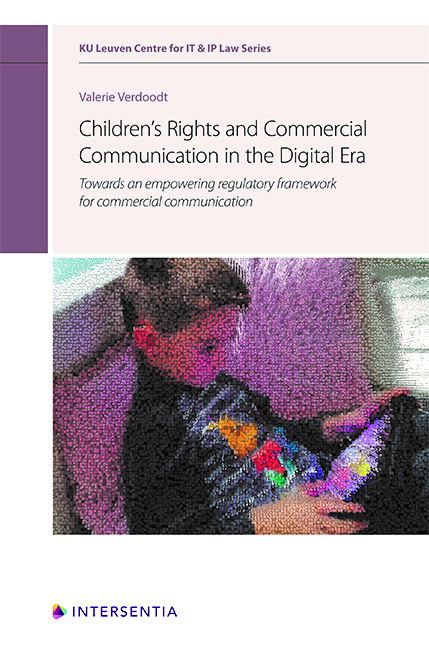 Children's Rights and Commercial Communication in the Digital Era
Children's Rights and Commercial Communication in the Digital Era Book contents
- Frontmatter
- Preface
- Contents
- Abbreviations
- Introduction
- PART I CHILDREN'S RIGHTS AND ADVERTISING LITERACY IN THE DIGITAL ERA
- PART II ASSESSMENT OF THE REGULATORY FRAMEWORK FOR COMMERCIAL COMMUNICATION IN LIGHT OF CHILDREN'S RIGHTS
- PART III ASSESSMENT OF NATIONAL ARIS IN THE AREA OF COMMERCIAL COMMUNICATION
- CONCLUDING REMARKS AND RECOMMENDATIONS FOR THE FUTURE
- Bibliography
- Miscellaneous Endmatter
Chapter I - The Interplay Between Alternative Regulatory Instruments and the Legal Framework for Commercial Communication
Published online by Cambridge University Press: 23 July 2020
- Frontmatter
- Preface
- Contents
- Abbreviations
- Introduction
- PART I CHILDREN'S RIGHTS AND ADVERTISING LITERACY IN THE DIGITAL ERA
- PART II ASSESSMENT OF THE REGULATORY FRAMEWORK FOR COMMERCIAL COMMUNICATION IN LIGHT OF CHILDREN'S RIGHTS
- PART III ASSESSMENT OF NATIONAL ARIS IN THE AREA OF COMMERCIAL COMMUNICATION
- CONCLUDING REMARKS AND RECOMMENDATIONS FOR THE FUTURE
- Bibliography
- Miscellaneous Endmatter
Summary
RECAP. The mapping of the current regulatory framework for commercial communication aimed at children showed that a myriad of provisions contained in both legislative and self-regulatory instruments may apply. These provisions are enforced at the national level by different regulatory authorities (i.e. media regulators, self-regulatory bodies, data protection authorities and consumer protection authorities). However, the evaluation of this fragmented framework revealed that the high number of applicable provisions and the existence of several regulatory authorities does not automatically mean that children are protected and empowered (cfr. the remaining gaps).
PROCEDURAL AND ORGANISATIONAL ELEMENTS. As the previous part of the book provided a detailed evaluation of the substantive elements of the regulatory framework, this part focuses on procedural (i.e. monitoring, enforcement and remedial measures) and organisational (i.e. the attribution of regulatory power, organisational structures) elements and, more specifically, within existing alternative regulatory instruments. The mapping showed that the advertising industry has been very active in the development of self-regulatory initiatives. Moreover, self-regulation and private rule-making has been promoted by the European Commission as an important part of the regulatory process of protecting children online since the very beginning. For these reasons this part of the research will be limited to a selection of existing ARIs in the area of commercial communication at the national level and explore their strengths and shortcomings. The aim of the comparative analysis is to distinguish those procedural or organisational elements that could improve the quality and effectiveness of ARIs to protect children in the context of commercial communication. The analysis also takes into account children's procedural rights.
Introduction. As an introduction to the comparative assessment, this chapter aims to situate ARIs within the broader legal framework for commercial communication. In relation to the interplay between legislation and ARIs, it is argued by Lievens that
“the use of ARIs does not occur in a legal vacuum. On the contrary, there are fundamental rights and other legal requirements – stemming from conventions, constitutions, laws, jurisprudence and soft law instruments – that need to be respected when creating, implementing and enforcing ARIs.”
A comprehensive analysis of those legal provisions that need to be taken into account for the construction and structuring of ARIs has already been addressed by Lievens.
- Type
- Chapter
- Information
- Children's Rights and Commercial Communication in the Digital EraTowards an Empowering Regulatory Framework for Commercial Communication, pp. 239 - 256Publisher: IntersentiaPrint publication year: 2020


